Packaging machine is an indispensable equipment in the production and processing of organic fertilizer. Judging from the sales and use of full-automatic packaging machines in the current market, it can be proved that the development of fertilizer packaging machines has been recognized by many fertilizer enterprises.
Of course, the strength of production enterprises in this field is also an important factor whether the development of automatic packaging machine can achieve the current achievements. Fertilizer packaging machine provides the most basic guarantee for the technical improvement of organic fertilizer production process, so as to have high-quality organic fertilizer products.
Whether it is the screened compost powder or the organic fertilizer particles processed by the fertilizer granulator, the operator only needs to put the bags into the bags one by one and take out part of the equipment at one time. The mechanical grab of the equipment will automatically take out the bag, print the date, open the bag, Send a signal to the measuring device, measure the blanking and seal the output.
Customers can also add detailed functions such as emergency stop, automatic card entry, abnormal discharge and so on according to the packaging requirements of organic fertilizer products. The whole process of organic fertilizer machine packaging does not need manual operation, which effectively improves the production efficiency of chemical fertilizer enterprises and saves labor costs. Administrative expenses have greatly reduced costs.
Category: Fertilizer From Cow Manure
Bio-organic fertilizer production projects solutions
1. The use of animal manure to produce bio-organic fertilizer. Livestock and poultry manure is rich in organic fertilizer and also contains a certain amount of nitrogen. Nutrients such as phosphorus and potassium required for plant growth are high-quality raw materials for the production of bio-organic fertilizers.
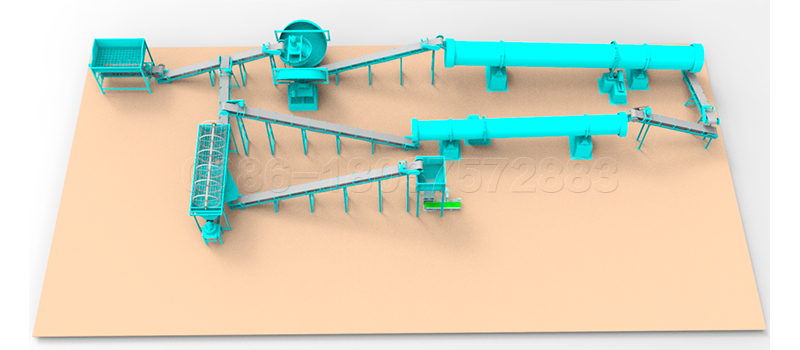
In the process of making bio-organic fertilizers, the dry-wet ratio and carbon-nitrogen ratio are adjusted by peat and rice bran. Add peat and rice bran to livestock and poultry manure, adjust the humidity of the material to about 50%, remove non-fermentable debris such as chicken manure, and the width is 2m, which is suitable for production. After fermentation, it is dried and crushed, and then sifted out of the debris. Disc granulators are used for granulation, packaging bio-organic fertilizers.
2. The bio-fertilizer project uses organic waste to produce bio-organic fertilizer. Organic waste refers to the garbage containing material components in urban and rural household garbage, mainly including crop straw, fiber, bamboo, waste paper, kitchen waste, etc. If this organic waste is not treated in time, it will become a source of pollution in the city. Environment, such as odor emissions, disease transmission, water pollution, etc.
Therefore, it is necessary to apply organic fertilizer scientifically and rationally. It makes up for the shortage of nitrogen, phosphorus and potassium fertilizer manufacturing process products. It can not only avoid the adverse consequences caused by self-accumulation and decomposition, but also significantly reduce the pollution caused by the application of a large number of chemical fertilizers to the environment.
After the pretreatment of organic waste, straw is added to adjust the C/N ratio of organic waste, and then the moisture content of the wastewater is adjusted, and the rapid composting compound bacterial agent is inoculated, high temperature fermentation, and medium temperature drying temperature.
In terms of equipment required for biofertilizer production, the decomposed materials need to be granulated with a fertilizer granulator. It can be made into bio-organic fertilizer after further drying, sieving and packaging.
More detailed info, welcome go to https://organicfertilizerplants.com/
Solutions for Organic Fertilizer Production with 5000 Ton Capacity Per Year
Detailed introduction to the configuration of small-scale organic fertilizer production line with an annual output of 5000 tons:
1. Organic fertilizer Dumper: the materials are directly stacked into strips and fermented by wheel dumper and straddle dumper. Tank fermentation is adopted.
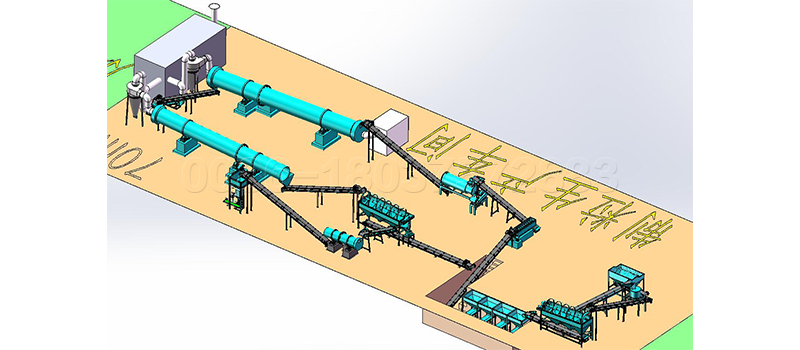
According to your production scale, you need to build 1-5 fermentation tanks with a width of 3M and a length of 40-60m. The fermentation products are continuously put into the fermentation tank and stirred and fermented by the mixer, which can achieve the purposes of water transfer, uniform stirring, deodorization and dehumidification. It can not only save a lot of labor, but also achieve the goal of complete maturity;
2. Organic fertilizer screening machine: screen out the fermented organic fertilizer and separate the large pieces and miscellaneous fibers inside, so as to facilitate the crushing, granulation and packaging of semi wet materials in the next step.
3. Organic fertilizer granulator: granulate the materials after crushing and stirring;
4. Organic fertilizer crusher: separate and crush the large sundries and stones in the screened organic fertilizer, which is beautiful and can ensure the product quality;
5. Organic fertilizer dryer: dry and cool the prepared particles;
6. Automatic packaging machine: granulate organic fertilizer particles and directly package and sell them.
Equipment lists for 100000 tons per year organic fertilizer production
The equipment required for the production line with an annual output of 100000 tons of organic fertilizer includes: trough fermentation stacker, horizontal mixing mixer, semi wet material crusher, new organic fertilizer granulator, rotary dryer, rotary cooler, drum screening machine, automatic packaging machine, etc.
Process flow of organic fertilizer production line with an annual output of 100000 tons:
The organic fertilizer production line is mainly used to measure the organic waste after fermentation and maturation of animal manure such as cow manure, sheep manure, pig manure, chicken manure, sludge, rice straw and corn straw in the stockyard.
After crushing and screening, the organic waste with water content of about 30% ~ 35%, together with binder raw materials (bentonite, humic acid) and other components, can be mixed in the batching and mixing system according to the proportion requirements (biological addition of functional bacteria can produce organic fertilizer, and addition of nitrogen, phosphorus and potassium (total nutrient content less than 15%)) to produce organic and inorganic fertilizer.
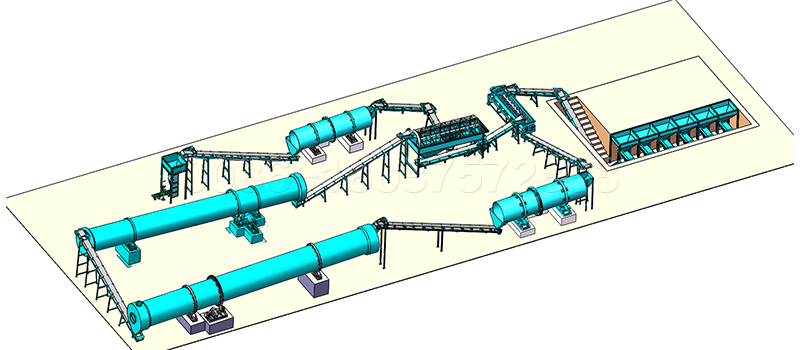
The fully mixed materials are evenly and continuously sent to the granulator by the belt conveyor, rounded into spherical particles by the polishing and shaping machine, dried by the dryer at low temperature and large air volume (≤ 65 ℃), cooled, screened and coated. The finished particles are transported to the finished product silo by the belt, measured by the computer quantitative packaging system, packaged and stored in the warehouse.
The equipment of organic fertilizer production line produces bio organic fertilizer through composting to improve the nutrients required by crops. The organic fertilizer produced by the composting technology introduced by the equipment manufacturer of the organic fertilizer production line adopts biological bacteria fermentation.
The organic fertilizer after fermentation and crushing contains certain inorganic nutrients and a large amount of organic matter and trace elements. Therefore, this biological organic fertilizer is especially suitable for horticultural crops and soil with long-term application of chemical fertilizer.
More detailed info, welcome go to https://www.fertilizermachinesale.com/
New Developed Machines for Organic Fertilizer Granulation
With the development of science and technology, the market competition of fertilizer granulator is becoming more and more fierce. How to grasp the market development quickly and effectively has become the key to the success of enterprises.
In recent years, the market scale and characteristics of compound fertilizer granulation equipment industry have changed greatly. How to understand the development and market transformation of compound fertilizer industry from a professional perspective is also the primary problem for the future development and survival of fertilizer machine manufacturers.
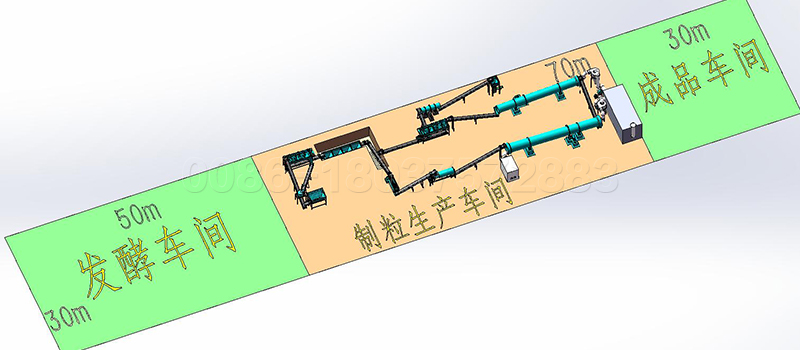
The quality of fertilizer granulator enterprises is related to the interests of users and the overall development process of market economy. We have strict requirements for equipment. In order to fulfill our social mission and better display our value, SX fertilizer machinery company has been expanding and expanding its own strength.
As a fertilizer granulation enterprise, it is the key to success and an important driving force to promote the gradual strengthening of the industry. In the future development, we will always keep a clear mind, not be blinded by the immediate achievements, always maintain a positive learning attitude, introduce more high-end technologies for the powerful NPK fertilizer production line and provide light.
For the future of the industry, we will continue to reform and innovate around the market demand. Although after a period of efforts, the overall technical level of the industry has been improved, and various equipment have been developed according to different market needs, further expanding the team and providing more comprehensive and thoughtful services to market users.
Users’ demand for fertilizer granulator will change constantly. Therefore, in order to stabilize its market position and maintain a good development state for a long time, enterprises continue to maintain the development attitude of scientific and technological innovation and use the power of high and new technology to improve and perfect, so as to comply with the market development trend and become more popular.
Organic Compound Fertilizer Production
The composition of organic fertilizer is complex, and rational application is very important. Fertilizer granulator equipment manufacturers suggest that we pay attention to the following two points.
1. Organic fertilizer should be fully decomposed before application. If some animal manure, such as pig manure, cow manure and sheep manure, is directly applied to the soil without fermentation and decomposition, the decomposed organic fertilizer in the soil will be decomposed and fermented by microorganisms, and the ammonia produced is easy to cause crop root burning, and some will breed weeds and spread diseases and pests.

We advocate using a dumper to fully ferment manure before application. After the compost is wetted with water, it is put into the fermentation tank to make the temperature reach 35-40 ℃. When feces are fully fermented at high temperature, it can kill insect eggs and weed seeds in compost, which is safer and more effective.
2. Organic fertilizer should not be too thick or applied too much. Especially when fertilizing dry land crops, if organic fertilizer is applied directly between rows or near the roots of crops, the concentration around the roots is too high due to the small water holding capacity of dry soil.
After the root system contacts the fertilizer pile, it will cause physiological water loss of crops and form reverse osmosis. Crops not only do not absorb nutrients, but also make water and nutrients in roots exude, resulting in poor growth or withering of crops, but water loss and dead seedlings cause soil nutrient imbalance.
The fertilizer made by NPK fertilizer manufacturing process can not alleviate soil problems, while organic fertilizer plays a great role in soil fertilization.
Therefore, organic fertilizer should be used as the base fertilizer, evenly mixed in the soil and integrated with the soil. When applying organic fertilizer in the growth period, ditch application or hole application should be adopted. Do not spread the pesticide on the ground. Foliar vegetables generally should not be sprayed with high concentration liquid organic fertilizer as foliar fertilizer.
How to make powder fertilizer from pig manure?
1. Pig manure organic fertilizer crusher is a professional crushing equipment for crushing high humidity and multi fiber materials. The crusher adopts high-speed rotating blade to crush materials, with good fiber particle size and high crushing efficiency.
Crusher equipment is mostly used for the production and processing of organic fertilizer. It has good crushing effect on chicken manure, sodium humate and other raw materials. The crushed materials can be further processed by the fertilizer granulator.
2. The pig manure crusher adopts two-stage rotor, with upper and lower stages of crushing. The materials become fine particles through the upper rotor crusher, and then transported to the lower rotor to continue crushing into fine powder. Achieve the best effect of material powder and hammer powder. Finally, the material is discharged directly from the discharge port
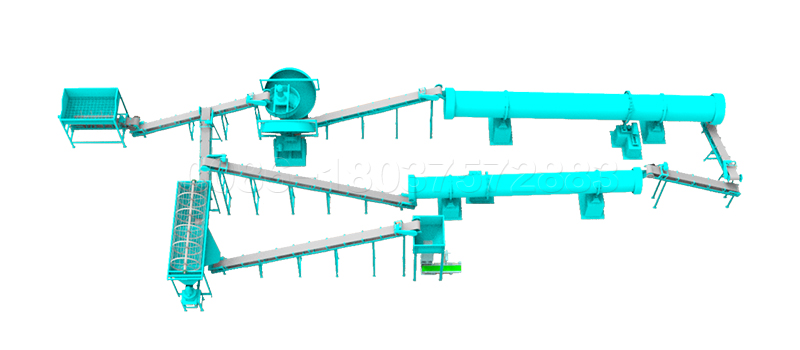
3. The pig manure crusher has no designed screen bottom, which can crush more than 100 kinds of materials and will never be blocked. Even if the moisture content of the material is too high, it can be crushed and will not be blocked by crushing wet materials, resulting in motor burning. Affect production.
4. The pig manure organic fertilizer crusher adopts high alloy wear-resistant hammer head, which is forged, especially strong and wear-resistant. It is stronger and wear-resistant than ordinary hammer head, increasing the service life of hammer.
5. The pig manure crusher adopts two-way clearance adjustment technology. If the hammer is worn, it does not need to be repaired. Where you can continue to use the hammer. Adjusting the gap between the hammer and the lining plate can control the particle size of the material.
We provide various crushers and fertilizer production machines for the fertilizer production line to meet the production needs of the fertilizer plant.
More details on making powder fertilizer from pig manure, go to https://manurefertilizermachine.com/composting-pig-manure/
Top 6 steps to make organic fertilizer granules?
In the process of organic fertilizer production, how to granulate the fermented raw materials is the key factor to determine whether the commercial fertilizer can enter the market. The following granulation methods are generally used.
Fertilizer production line
(1) Agglomerate granulation. Under the action of rotation, vibration and stirring, the wet powder in motion is agglomerated. Or the fluidized bed is used to coagulate dry powder and particles into suitable particles by supplying spray solution (adhesive).
(2) Extrusion granulation. It is a method of making dry powder or wet powder containing adhesive into cylindrical, spherical or sheet by mechanical processing such as extrusion, roll extrusion or pressing.

(3) Crushing and granulation. It is to crush block materials into particles of appropriate size.
(4) Melt granulation. It is a method of granulation by cooling and hardening molten liquid.
(5) spray granulation. It is a method of directly granulating solid after concentration in liquid.
(6) Liquid phase crystallization granulation. It is a method that materials crystallize in liquid phase and agglomerate into spherical particles through liquid bridging agent and stirring.
This technology is widely used in pharmaceutical industry. Because the particle shape is spherical, it is also called spherical crystallization granulation method, which is abbreviated as spherulite granulation method.
Spherulite particles are pure material particles with good fluidity, filling and compression formability. In recent years, the technology has been successfully developed. That is, polymer copolymer precipitation is added in the spherulite crystallization process to prepare sustained-release, rapid release, enteric coated, gastric coated pellets, floating hollow pellets, biodegradable microcapsules, etc. Preparation of sustained release pellets.
More detailed info on orgnaic fertilizer granulation, go to https://www.fertilizer-plants.com/granulator-machine-for-fertilizer/
How does organic fertilizer promote agricultural industry development?
With the continuous development of society and the continuous progress of science and technology, China’s economic level has been greatly improved, and the people’s living standard has also been greatly improved. Various factors have provided great convenience for the development of agriculture. However, in order to ensure the sustainable development of environment and the secondary service life of land, organic fertilizer machine came into being.
The organic fertilizer manufacturing process, such as the organic fertilizer produced by the organic fertilizer granulator, not only has a certain positive significance for environmental protection, but also reduces the irreversible pollution damage of many chemical fertilizers to the land and eliminates crops from the source.
The harm of residual chemicals to human body is more conducive to people’s health. In addition, organic fertilizer can increase the yield of crops and help to increase agricultural production.
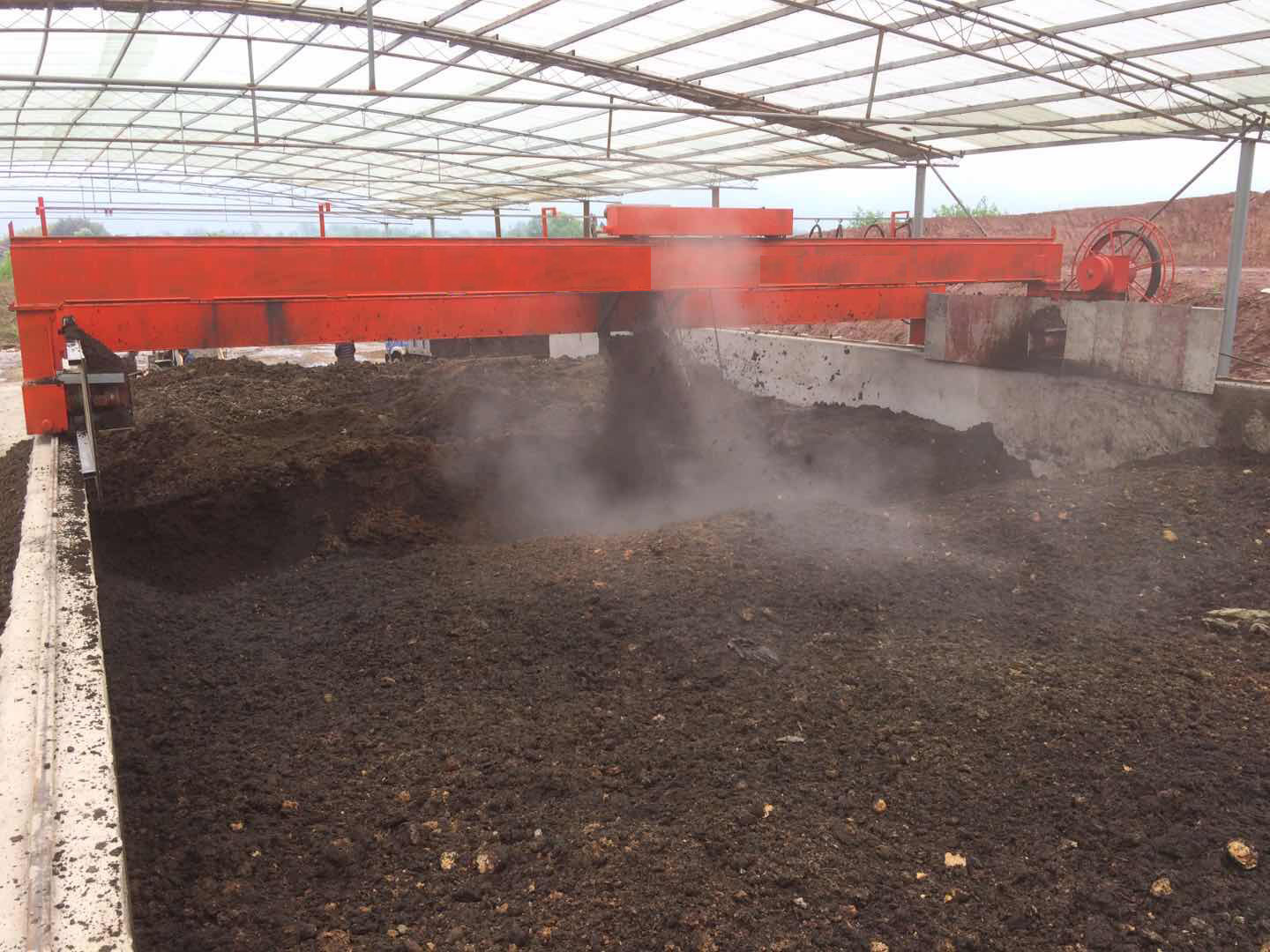
According to the development of the market, organic fertilizer equipment must have a relatively broad development space. However, these are not worth showing off the capital of organic fertilizer equipment. In the long development process, only relying on a good living environment can not promote the maximum development of organic fertilizer equipment.
Therefore, the primary task of the current organic fertilizer equipment is to recognize its own shortcomings, seriously study the advanced organic fertilizer production technology, and reasonably integrate it into the actual research and development, so as to make the organic fertilizer equipment more in line with the market development after repeated improvement.
It can provide more comprehensive and satisfactory services for agricultural production. In the increasingly fierce market competition, the factor that can effectively support the rapid development of organic fertilizer equipment lies in the comprehensive strength of the equipment.
Find machines to make organic fertilizer, go to https://organicfertilizermachines.com/
Quality organic fertilizer production from plant ash
Plant ash is the residue of firewood after combustion. It belongs to alkalinity. The main component is potassium carbonate (K2CO3) which can be used as fertilizer. Before the widespread use of chemical fertilizers, agricultural plant ash refers to the ash produced after burning and eating by mountain grass, straw and branches (excluding the ash produced by coal).
The production of plant ash fertilizer is usually stacked with a layer of plant ash and used after several months of maturity. In industry, plant ash is also used as the main raw material of biological fertilizer project to process biological organic fertilizer.
Plant ash shall not be mixed with other fertilizers during storage. Some farmers are used to putting ash in puddles and mixing it with organic fertilizer and straw, which is very wrong. Because the ash is alkaline, it will cause the volatilization of nitrogen in organic fertilizer and reduce fertilizer efficiency. Such treatment will not only waste fertilizer, but also pollute the environment.
Ashes must be applied separately. Plant ash cannot be mixed with organic farm manure and ammonium nitrogen fertilizer to avoid nitrogen volatilization loss, nor can it be mixed with phosphorus fertilizer to avoid phosphorus fixation and reduce the use efficiency of phosphorus fertilizer.
Therefore, when planning the fertilizer manufacturing process and using plant ash as organic raw material, the fertilizer plant should pay attention to the proportion of raw materials.
1. Soil application: since the ash is alkaline, cohesive soil, acidic or neutral soil should be used. Soil application can be used as base fertilizer, seed fertilizer and topdressing, as well as seedling raising and seedling covering (seed covering fertilizer).
When used as base fertilizer and seed fertilizer, the amount of fertilizer should not be too large, and should be isolated from seeds to prevent seed burning. Generally, 50-100kg per mu is appropriate.

It is suitable for centralized soil application, strip application or hole application, with a depth of 8-10cm, and covered with soil after construction. Mix the wet soil 2-3 times or spray a little water before application.
2. Topdressing outside the root: more than 90% of the potassium contained in plant ash is soluble in water, which is a quick acting potassium fertilizer. According to this characteristic, plant ash can be used as extraroot topdressing, that is, 1% concentration of plant ash extract can be used for foliar spraying.
3. Priority crops: plant ash is suitable for various crops, especially potassium free or potassium free and chlorine free crops, such as potato, sweet potato, tobacco, grape, sunflower, sugar beet, etc.
Plant ash can be used for potato, not only for soil application, but also for potato wounds. In this way, it can be used as seed fertilizer to prevent wound infection and decay.
More types of fertilizer machines for organic fertilizer production, go to https://compostturnermachine.com/
Conventional organic fertilizer production machine configurations
1. Compost Dumper: industrial fermentation treatment of organic solids such as livestock manure, domestic waste, sludge and crop straw. The equipment integrates the uniformity of fermentation materials. Therefore, the front of the fermentation tank can be freely put in or taken out, and waste such as feces can be retained for a long time.
2. The mixer has fast mixing speed and good uniformity. It can mix 30% liquid and add viscous materials. There are two rotors working in opposite directions. Because the blade has multiple special angles, it can mix quickly and efficiently regardless of the shape, size and density of the material. The lower door opening speed is fast and the residue is less.
3. Wet material crusher is a professional crushing equipment for crushing high humidity and multi fiber materials. The high-speed rotating blade has the advantages of good particle size, high efficiency and high energy. Semi wet material crusher is mostly used for the production and processing of organic fertilizer. The crushing effect of chicken manure, sodium humate and other raw materials is very good.

4. Organic fertilizer granulator is a molding machine that can make materials into specific shapes. It is widely used in the production of organic fertilizer, bio organic fertilizer and other fields.
5. When the rotary cooler cools to a certain temperature, it can reduce the moisture content, reduce the labor intensity and improve the output.
6. The rotary dryer is mainly composed of rotating body, lifting plate, transmission device, support device and sealing ring, with diameter of: Φ 1000- Φ 4000, the length depends on the drying requirements. Collect the dried product from the bottom of the bottom.
7. Drum screen adopts combined screen, which is convenient for maintenance and replacement. The machine has the advantages of simple structure, convenient operation and stable operation. Drum screening machine is mainly used for the separation of finished products and returned materials. It can also realize the classification of finished products and uniform sorting of finished products.
8. The coating machine is composed of screw conveyor, mixing tank, oil pump and main engine, which can effectively prevent the caking of compound fertilizer. The main body is made of polypropylene lining or acid resistant stainless steel.
9. The packaging machine is mainly composed of feeding mechanism (gate), weighing bucket, bag clamping mechanism, frame, air inlet, pneumatic system, sensor, control box, conveying and sewing mechanism.
More detailed info, go to https://compostturnermachine.com/complete-granule-production-line-solutions/
Organic fertilizer products yileds improvement
In a complete organic fertilizer manufacturing process for manure fertilizer production, fermentation, granulation and crushing are three key steps. Therefore, fermentation stacker, organic fertilizer granulator and organic fertilizer crusher play an important role in all organic fertilizer equipment. Let’s discuss the problems that may be encountered in the production process of these two key links.
How to improve the product output and output, the key lies in the organic fertilizer granulator.
1、 According to the moisture, fineness and cohesiveness of raw materials.
1. Moisture
Powder raw materials form spherical particles through the attachment of water. Therefore, controlling water and making water uniform have become the key factors to improve yield. The lower the moisture content, the lower the granulation rate, the higher the moisture content, the more large particles, the uneven moisture, the smaller the particle size, and the lower the yield.
2. Material fineness
It is needless to say that the material fiber has natural coarse granulation effect, rough and brittle appearance and poor formability. The higher the fineness, the better the formability and the smoother the particles.
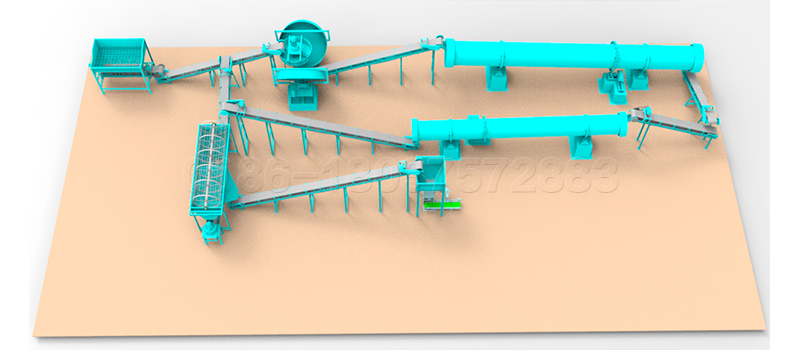
3. Is the material sticky
In particular, organic fertilizer granulation, general raw animal manure (chicken manure, pig manure, cow manure, sheep manure, pigeon manure, etc.), straw (corn straw, straw, leaves, etc.), fungus residue, sugar residue, drug residue, monosodium glutamate residue, etc. The viscosity of general materials is poor, so some viscous fillers such as bentonite need to be added.
2、 Fertilizer granulator is selected for organic fertilizer production line.
For example, the production of granules can choose disc granulator, new organic fertilizer granulator and drum granulator.
If columnar is produced, ring mold granulator and columnar extruder are selected.
For irregular and flat ball type, select the appropriate drum extrusion granulator (depending on the die).
All kinds of granulation equipment have their own advantages and disadvantages. Different equipment shall be selected according to raw materials, investment cost (drying or not) and the needs of farmers.
3、 Equipment operation
1. For example, the disc granulator can pass the inclination of the disc. The more flat the disc is, the larger the particles are, the steeper the disc is, and the smaller the particles are.
2. According to the control of material moisture, the larger the moisture, the larger the particles, the smaller the moisture, and the smaller the particles.
3. According to the speed, the higher the speed, the smaller the particles, and the lower the speed, the larger the particles.
In general, the uneven particles of organic fertilizer are mostly caused by the uneven mixing of materials and the thickness of material fiber.
How to make fertilizer for organic crop cultivation?
Biological fertilizer production takes livestock manure, crop straw, agricultural and sideline products and organic waste from food processing as raw materials, and is equipped with multifunctional fermentation strains. After deodorization, decomposition and dehydration, functional biological strains are added. It is an organic fertilizer containing a certain amount of functional microorganisms processed by chemicals. In line with the fertilizer principle of producing safe and pollution-free green agricultural products, it is a promising fertilizer variety.
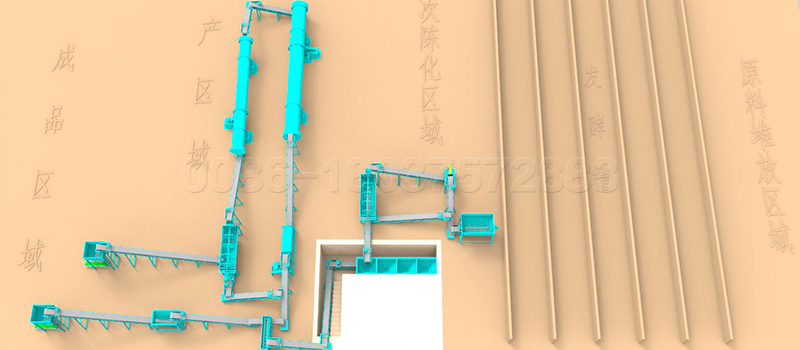
Biological organic fertilizer
The best way to get the best results is when applying bio organic fertilizer:
First, bio organic fertilizer should not be applied too deep into the soil. Too deep will affect the activity of bacteria. Bio organic fertilizer should be applied 10-15 cm below the ground surface.
Secondly, the ratio of bio organic fertilizer to other types of fertilizer including manure (raw chicken manure, etc.) should be reasonable. In the specific application, pay attention to the types of vegetables and soil conditions, calculate first, then mix, and then apply.
In addition, the effect of ditch application of bio organic fertilizer was better.
Main equipment of bio organic fertilizer production line:
1. Fermentation stacker: one of the main supporting equipment of fertilizer mechanical equipment unit, which can turn the pile evenly and improve the fermentation speed.
2. Horizontal mixer: this series of horizontal mixer is a new generation of mixing equipment developed by our company. The machine has high mixing degree and low residue. It is suitable for the mixing of organic fertilizer and inorganic fertilizer.
3. Fertilizer granulator: designed and manufactured by wet continuous propulsion granulation. The machine can not only granulate a variety of organic materials, especially coarse fiber materials that are difficult to granulate by conventional equipment.
4. Disc screen: This machine adopts combined screen, which is convenient for maintenance and replacement. The utility model has the advantages of simple structure, convenient operation and stable operation. It is an ideal equipment for compound fertilizer production.
5. Conveyor: suitable for conveying bulk materials or box like articles in coal, metallurgy, mining, chemical industry, building materials, wharf, warehouse and construction site, especially suitable for environments requiring chemical loading, such as chemical fertilizer plant and cement plant, Saved a lot of people.
More details, welcome go to https://organicfertilizerplants.com/bio-organic-fertilizer-production/
How to make bio fertilizer step by step?
Bio organic fertilizer refers to the fertilizer processed by microbial fermentation, decomposition and harmless treatment with livestock manure, straw, agricultural and sideline products, food processing waste, organic waste and urban sludge as raw materials.
Role of bio organic fertilizer:
(1) Increase crop yield and improve crop quality.
(2) Improve soil fertility and soil physical and chemical properties
(3) Regulating microbial flora and improving soil micro ecosystem
(4) Activate insoluble compounds and improve soil supply.
(5) Improve soil ecology and reduce the occurrence of diseases and pests
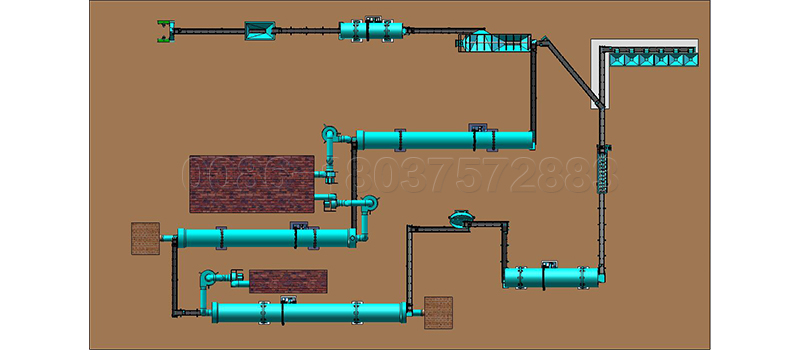
Production process and technology of biological fertilizer:
1. Production process of bio organic fertilizer
The bio organic fertilizer production enterprise registered with the Ministry of agriculture is mainly engaged in the production of microbial fertilizer. In the process of fermentation production, trough stacking fermentation and other fermentation methods, such as flat fermentation, are used.
The method, fermentation tank fermentation method and closed warehouse fermentation method are also used in production. In the process of fermentation and decomposition, the adjustment of material moisture, carbon nitrogen ratio and temperature and the use of decomposition agent are the key to the production process, especially the application of microbial agent directly affects the degree and maturity of circular fermentation.
The decomposed substance basically realizes the harmlessness of the product, which is conducive to the survival of the functional bacteria added in the post-treatment process.
2. Production technology
In the post-treatment of fermentation materials, most enterprises will add functional bacteria for compound molding. The dosage form of the product is mainly powder, but there are also fertilizer granulators for granulation.
The granular product overcomes the disadvantages of poor appearance and low grade of powdered products, improves the commodity of products, but also increases the production cost of enterprises, and has a certain impact on the survival of effective bacteria.
More detailed info on bio fertilizer production, welcome go to https://www.fertilizer-plants.com/bio-fertilizer-manufacturing/
Manure to Compost
Manure is organic matter, in addition to green manure, most of it comes from animal manure, which can be used as agricultural organic fertilizer.
Manure improves soil fertility by adding organic matter and nutrients (such as nitrogen), which are used by bacteria, fungi and other organisms in the soil. Then higher organisms feed on fungi and bacteria in the life chain of soil food web.
In the past, the term “manure” included inorganic fertilizer, but this usage is very rare now.
Animal excrement
Most animal faeces consist of faeces. Common forms of animal manure include farmyard manure (FYM) or farm mud (liquid manure). FYM also contains plant materials (usually straw), which are used as bedding for animals and absorb feces and urine.

Agricultural fertilizers in liquid form, called slurries, are produced by more intensive livestock feeding systems using concrete or slats instead of straw bedding. Different animal faeces have different quality and need different application amount when used as fertilizer.
For example, horses, cattle, pigs, sheep, chickens, turkeys, rabbits and bird droppings from seabirds and bats all have different characteristics. For example, the contents of nitrogen and potassium in sheep manure are very high, while the contents of nitrogen and potassium in pig manure are relatively low. How to make pig manure compost? Here are solutions for you: https://manurefertilizermachine.com/composting-pig-manure/
Horses mainly eat grass and some weeds, so horse manure may contain grass and weed seeds, because horses don’t digest seeds like cattle. Cow manure is a good source of nitrogen and organic carbon. The content of nitrogen and phosphate in chicken sand is very high, and it is highly praised for these two characteristics.
Animal faeces may be adulterated or contaminated with other animal products, such as wool (poor quality and other hair), feathers, blood and bones. Livestock feed may be mixed with manure due to spillage. For example, chickens are often fed meat and bone meal, an animal product that may eventually be mixed with chicken manure.
Human excrement
Some people call human excrement human excrement, others use the word “human excrement”. Like animal manure, it can be used as a soil conditioner (reusing waste in agriculture). Sewage sludge is a kind of material containing human excreta, because it is produced after sewage treatment plant mixes excreta with water and processes wastewater.
Compost
Compost is the decomposition residue of organic materials. It usually comes from plants, but usually includes some animal manure or bedding.
Advantages of organic fertilizer production line:
1. Semi wet material crusher is adopted, which has strong adaptability to water content.
2. The particle polishing machine makes the spherical particles uniform in size, smooth in surface and high in strength. Suitable for connection with various granulators.
3. Belt conveyor and other supporting equipment are used to connect the whole line.
4. Compact structure, stable performance, easy operation and maintenance.
5. The equipment can be selected according to your actual needs.
Applicable product line main products:
Semi wet crusher
Fertilizer mixer – Horizontal
Fertilizer mixer – vertical
Fertilizer dryer
Drum cooler
Rotary screen
Automatic packaging machine
More details, welcome go to https://manurefertilizermachine.com/manure-processing-machinery/
How to make powder fertilizer from cow dung?
What kind of fertilizer manufacturing equipment is needed to make cow dung into powdered organic fertilizer?
1. Tipping machine. The function of this machine is to turn the fermented materials evenly, make them fully contact with the air, disperse part of the water, and crush the large and small materials into powder. It has the function of pulverizer.
2. Forklift feeder, the function of this machine is to store the fermented materials and transport them evenly and quantitatively to the next link. This machine is equipped with frequency converter, which can adjust the conveying speed of belt conveyor. The silo is equipped with anti smashing net, which can make the materials fall into the silo slowly and separate the large materials. The middle and lower part of the silo is equipped with an anti blocking mixing device to prevent material blockage.
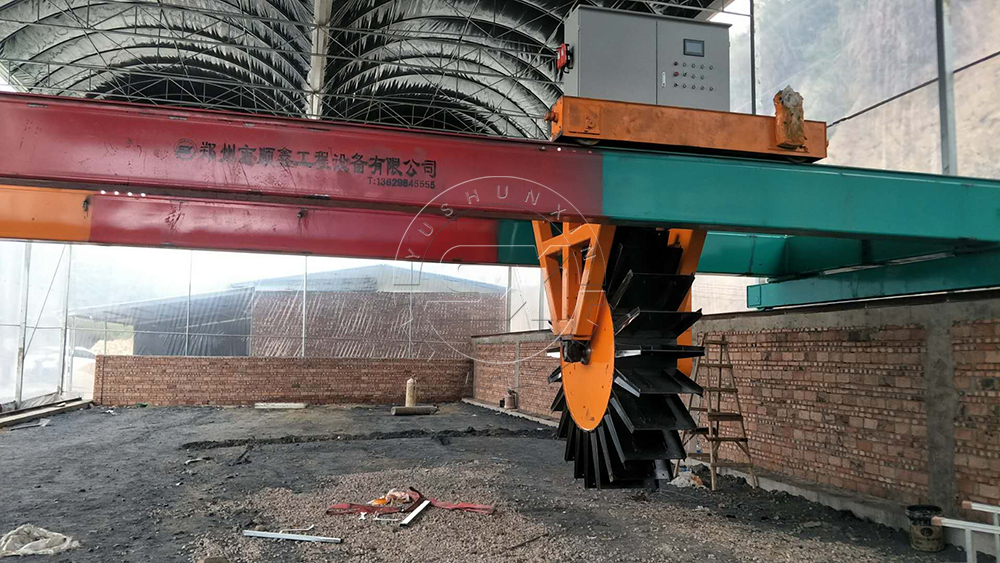
3. The new chain crusher can crush the fermented material into powder with more than 40 mesh, and the moisture content of the material is controlled below 40%.
4. Drum screening machine, the role of the machine is to screen the crushed materials, finished materials into the next process. As the screened material is semi wet, the screen is easy to block, and generally equipped with anti blocking and impact devices. Bulk or granular materials are sifted out to see their composition for re fermentation or disposal.
5. Dynamic batching machine. The function of this machine is to mix several materials in strict accordance with the set proportion. Several kinds of materials are gathered on the belt conveyor and transported to the mixer for mixing. The batching accuracy of this machine is 5 ‰.
6. The double shaft mixer or the single shaft mixer, the equipment needed for the production of biological fertilizer, can play the role of continuous mixing belt conveying, so that the materials can be fully mixed evenly.
7. Buffer bin. The function of this machine is to store finished organic fertilizer materials. This machine is equipped with frequency converter, which can adjust the speed of the conveyor. It can realize the electrical control of the packing scale, transport the materials when needed, and stop the transport when not needed, so as to ensure that the powder packing scale has flowing materials at any time and will not cause material blockage.
8. This machine is used for quantitative packaging of finished materials (20-50kg). There are two types of bucket (weighing before bag sticking and directly dropping after bag sticking) and no bucket (weighing after bag dropping). The bucket scale is equipped with automatic folding machine, automatic sewing machine and automatic trimming machine, which only needs one person to operate.
How to kill pests in organic fertilizer production process from animal manure?
The main raw material for organic fertilizer production is animal manure. There are many untreated or improperly treated pests in animal manure, such as treated, worms and so on. These pests breed and cause damage to vegetables, grains, fruits and so on.
Crops are good organic fertilizers. But we often find that when using crops, fertilizer sometimes leads to a large number of soil diseases and insect pests, And it increases year by year. I have been doing tests for several years and achieved good results. Now I have become a common element in fertilizer treatment to be faithful to agriculture.
1. Flatten poultry feces, dry in the sun, mash fine powder, and mix 1 kg of thiophene per cubic meter. After the round table is piled up, mix evenly and smear with flat mud for 15-20 days.
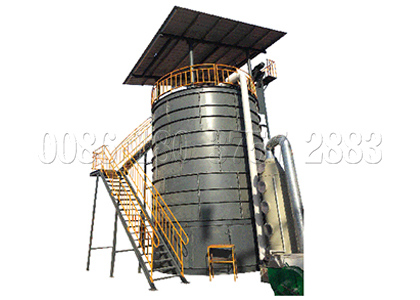
2. Mix fresh cow dung and sheep ash with 30% ash, then spread to 10 cm thick and spray 1 kg liquid per square meter. Liquid preparation: water 1605, carbendazim ratio 100:0.2:0.3.
Referer url, go to https://organicfertilizermachines.com/
3. When exposed to the sun, half human manure should be piled into a truncated cone of 50cm in the shape of a high platform, with flat mud paste, and several drugs on the top of the cork should be used to penetrate the hole, with the depth of 40cm, and then filled with liquid.
Liquid preparation: the ratio of water to trichlorfon was 100:0.5.
The first step of our organic fertilizer production line is fermentation composting, which is a process of killing pests. You can learn about the fermentation mode and site construction method of organic fertilizer. We have several fermentation composting turnover machines that can be selected according to our actual needs.
4 Characteristics of organic fertilizer production line
1. Semi wet material crusher is adopted, which has strong adaptability to
moisture content.
2. The polishing machine can make spherical particles with uniform size, smooth surface and high strength. Suitable for connection with various granulators.
3. Use belt conveyor and other supporting equipment to connect the whole production line.
4. Compact structure, stable performance, easy operation and maintenance.
5. According to your actual needs, the equipment is optional.
For the construction of customers, we can provide free construction drawings. Welcome to contact us!
More detailes info, type here
Machines for Organic Fertilizer Manufacturing
A lot of garbage produced by residents every day can be used, and can be processed into organic fertilizer raw materials after secondary treatment. The market position and broad development prospect of organic fertilizer production equipment can be predicted. Automatic organic fertilizer production line is the most skilled equipment in the industry.
It can work independently without help, and has high precision, avoids the waste of resources, improves the qualified rate of products, and improves the qualified rate of products. Save a lot of unnecessary economic expenditure. It can not only save costs for the company, but also create greater economic benefits for the company, with higher output, so that the goods can enter the market at the fastest speed and the best time, and obtain a higher market share. sales volume.

Organic fertilizer production equipment also follows the national development direction, and has begun to diversify. According to the market demand, today’s organic fertilizer production equipment has developed into special equipment. In this way, the one-to-one service of organic fertilizer production equipment can improve enterprise efficiency, reduce losses and increase profits.
Today, the development of organic fertilizer production equipment has expanded to high-speed, complete set, highly automated and diversified fields. The diversified development of organic fertilizer production equipment is inseparable from the efforts and struggle of enterprises, because in the face of such a development environment, if we want to further the development of enterprises, we must let the domestic market organic fertilizer production equipment is moving towards the road of automation.
The equipment needed for the production of biological fertilizer will make a difference in the limited market. Some technologically backward, smaller manufacturers will be driven out of the market and forced to shut down. Therefore, if you want to have a larger application group forever, you must do a good job in communication with customers, do a good job in market research, and finally make the organic fertilizer production equipment better meet the demand and serve the public.
So is organic fertilizer. In the past, farmers used accumulated organic fertilizer directly. Nowadays, with the improvement of living standards, high-tech equipment is also used for large-scale production of organic fertilizer. Is to make life more convenient production of production equipment.
How to make quality bio organic fertilizer products?
Organic fertilizer production line uses organic fertilizer fermentation technology to process animal manure into harmless fertilizer, involving two kinds of probiotics, one is mature bacteria, the other is functional bacteria, which play different roles. The former is a kind of rotten animal manure, while the latter is used to regulate the effect of organic fertilizer.
What kind of bacteria are these probiotics?
Rotting bacteria is a new generation of high efficient manure decomposition agent independently developed. The product contains bacillus, mold and other complex microbiota, rich in protease and cellulase, with the advantages of fast deodorization, strong activity and h

igh efficiency! It has the following functions:
1. Treatment of harmful bacteria in animal feces.
Through continuous high temperature and microbial balance, harmful bacteria, insects, eggs, grass seeds and other crop pests in feces can be quickly and completely killed, and the reproduction of pathogens is inhibited.
2. Deodorize and improve environmental quality
Deodorization is one of the main characteristics of organic fertilizer fermentation. Rotting bacteria can decompose organic matter, organic sulfide, organic nitrogen and so on, which can inhibit the growth of rotting microorganisms and greatly improve the environment of the site.
3. Rich nutrients
In the process of treatment, nutrients change from ineffective and slow effective state to effective and fast action state. To form natural materials with excellent water absorption and retention characteristics, prevent the loss of fertilizer and water, and become a good natural protective film of soil, so as to achieve the role of nutrient enrichment.
Why fermentation before organic fertilizer production?
Organic fertilizer production line is made of fresh chicken manure and pig manure, and it does not contain any chemical components. However, chicken and pig have poor digestion ability, which can only consume 25% of nutrition, while 75% of the other nutrients in feed are discharged with feces.
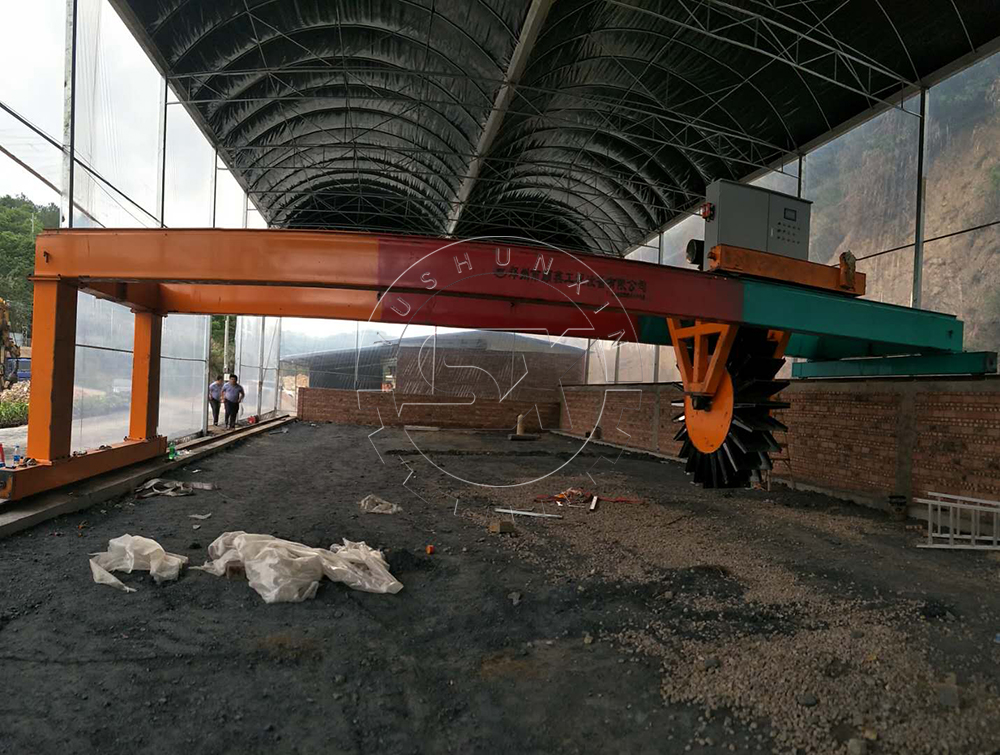
Therefore, the dry products contain nitrogen, phosphorus, potassium, organic matter, amino acid, protein and other components.
What is the reason for the fermentation of organic fertilizer production line?
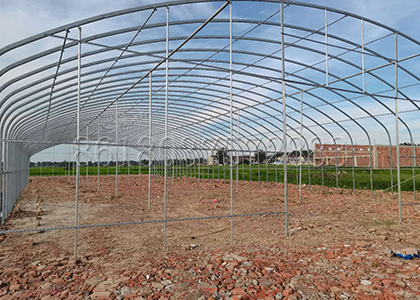
The reason of fermentation in organic fertilizer production line
(1) In the fermentation process of organic fertilizer production line, the odor produced by compost should be prevented and controlled, and secondary pollution should be avoided. Adding fermentor or fast decomposing bacteria in compost can reduce odor in a short time, and the sensory effect is good. Or the odor produced by composting plant can be treated by biological deodorization technology.
(2) In the process of organic fertilizer production, the factors that affect the fermentation and microbial reproduction of organic waste must be effectively controlled. The main factors are the organic matter content, water content, C / N ratio, oxygen concentration and temperature and pH value in composting process.
On the one hand, the carbon nitrogen ratio, temperature, humidity, pH value, oxygen content and other nutrients needed for the growth and reproduction of each microorganism strain were satisfied by various factors; On the other hand, different nutrient content will produce different fertilizer effects.
For example, high carbon content can increase soil fungi, nitrogen elements help increase soil bacteria, and calcium has a significant effect on the resistance of crops.
(3) Strictly control the heavy metal content in raw materials to prevent microbial poisoning in the later production process, and the heavy metal content in the organic fertilizer products exceeds the standard, and pollutes the soil and crops.
(4) After analysis and detection, the content of trace elements such as organic matter, humic acid, nitrogen, phosphorus, potassium and the number of living bacteria should meet or exceed the national standards.
Price to make organic fertilzer
To build a small organic fertilizer processing plant, we need to buy two kinds of equipment: powder organic fertilizer production line and granular organic fertilizer production line. Compared with powder production line, particle production line equipment needs more equipment and investment.
The production line of powdered organic fertilizer needs to purchase equipment: fermentation overturning machine, pulverizer, packaging machine, etc. the cost of organic fertilizer production plant is between 80000 and 150000.

What is the cost of the organic fertilizer production line?
Granular organic fertilizer production line needs to purchase equipment: fermentation turnover machine, pulverizer, granulator, screening machine, packaging machine, etc. the cost of organic fertilizer production plant is 150000-450000.
There are many kinds of organic fertilizer production machines sx, so we need to make the plan of organic fertilizer production line according to the different raw materials and output of organic fertilizer produced by customers.
Large scale chemical fertilizer plants should adopt a complete set of production configuration. The appearance and nutritional composition of the finished product can meet the market demand, and has great advantages in promoting the finished product of organic fertilizer.
The organic fertilizer production line with medium and low configuration is suitable for small and medium-sized chemical fertilizer plants. The sales scope of finished organic fertilizer is limited to nearby areas, and some processes in the production process of organic fertilizer need to be completed manually.
How to make powder fertilizer from cow dung?
Advantages of using Cow Dung Powder Fertilizer Production for Agricultural Application
It is really an age-old tradition to utilize cow dung within the garden. Most farmers use fresh cow manure within their fertilizers to enhance crop production. But, fresh cow dung contains high amounts of ammonia. This usually contributes to plants dying when the farmer applies the manure directly. This is why modern farmers use cow dung powder rather than the raw product. They offer lots of benefits that other manure may not offer.
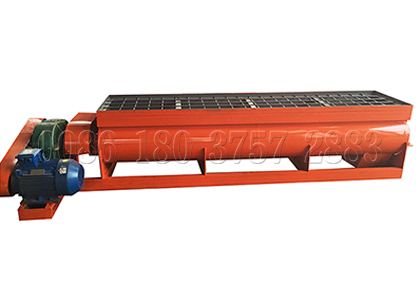
Elements of cow dung powder
Cow dung powder is a mix of numerous things. While the dung includes digested grains and grass, the powder used for fertilizer production experiences a composting process. Cow dung contains approximately 1% potassium, 2% phosphorus, and threePercent nitrogen. Aside from these three essential elements, furthermore, it has a high portion of ammonia that is certainly harmful for pathogens. That is why farmers use composted cow dung to ensure that it doesn’t include the harmful ammonia gas.
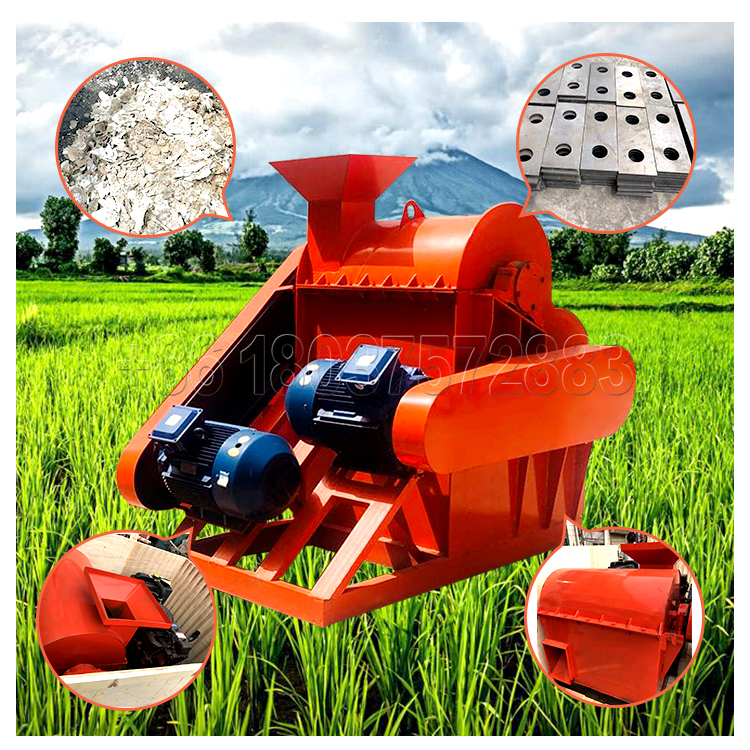
Functions of cow dung powder for agricultural applications
Composted cow dung powder adds a lot of organic matter inside the soil that promotes crop growth. It improves the moisture-holding capacity from the soil. So, farmers should water their crops less often. Countries that have scarce water supply use cow dung powder fertilizers to make sure they don’t need to rely heavily on water. The roots of the crop use additional nutrients and water whenever required.
As well as increasing moisture-holding capacity, cow dung powder fertilizer also improves soil aeration. It breaks down the compacted soils and increases porosity, allowing the crops to grow quickly. The healthy bacteria within this sort of fertilizer converts nutrients to several accessible forms that release the main minerals slowly and steadily without burning the tender crop roots.

Composting cow dung powder
Cow dung powder is not only employed in the fertilizers and also spread like a top dressing on crop soil. This nutrient-rich fertilizer is suitable with regards to producing fresh crops at the outset of the growing season.
The composting process starts by collecting cow dung and mixing it with relatively lighter materials, like hay or straw. Several of the other ingredients employed in the compost mix are ash, lime, garden debris like leaves and twigs, and vegetable matter. Most manufacturers produce mass-scale cow dung fertilizer. So, they need sufficient space to permit the pile to obtain enough air.
Many farmers who require cow dung powder fertilizer in small quantities can make exactly the same in their home. Since it doesn’t require excessive heat, the farmer are able to keep the manure beneath a shade and keep twisting and turning it to provide air. Alternatively, manufacturers producing this fertilizer in big amounts use composting machines that mix the ingredients in equal quantities. They could control the temperature as well as twist and turn the manure periodically.
This is amongst the most inexpensive fertilizers in the agricultural sector. But, it will help to produce a high-quality crop, and that’s why most farmers apply it widely all over the world.
How organic fertilizer is made?
The organic fertilizer production line from sx organic machines is designed for the production of organic fertilizer granulator. In the process of organic fertilizer production, different types of fertilizer equipment are equipped to complete the production process. Here, we introduce the characteristics of organic fertilizer.
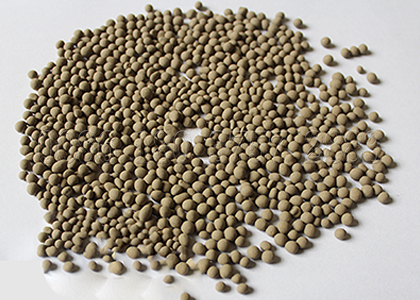
In the process of organic fertilizer production, organic fertilizer can be divided into powder organic fertilizer and granular organic fertilizer.
Among them, the technology of powdery organic fertilizer is relatively simple
1. Check the ingredients of your raw materials (such as plant ash, furfural residue, humic acid, etc.) to understand the accurate nutritional composition and proportion of each raw material, which plays an important role in the production of organic fertilizer;

2. The general production process of organic fertilizer requires the content of nitrogen, phosphorus and organic fertilizer granulator or disc granulator or roller granulator; the production process of organic fertilizer requires the content of nitrogen, phosphorus and potassium to be more than 4% and the content of organic matter to be more than 30%. So organic fertilizer can be mixed, crushed and packaged.
In addition, fertilizer equipment such as drum granulator, organic fertilizer granulator, disc granulator or roller granulator is required for organic fertilizer granules. The production of organic fertilizer requires the same raw materials as powder fertilizer, but after adding binder (bentonite or green palygorskite), the final particles need to be dried by rotary dryer.
Organic fertilizer production line
There is also an organic fertilizer with livestock manure, domestic waste and plant straw as the main raw materials.
The production process of the organic fertilizer is as follows: raw material drying, crushing, fermentation, mixing (mixed with chemical fertilizer). And other organic or inorganic substances, so that nitrogen, phosphorus, potassium content into particles (or not into particles, powder) and then packaging.

If the raw material is humic acid or peat, the organic fertilizer will not be fermented in the production process, and there is no need for fermentation. Other steps are the same as above.
As a professional fertilizer machinery manufacturer, we mainly produce all kinds of fertilizer equipment to complete the fertilizer production process. Our main products include not only fertilizer granulators, but also different types of fertilizer production lines.
How is fertilizer products produced?
Fertilizer machine knowledge, you should know how to produce fertilizer
Organic fertilizer and compound fertilizer are two common fertilizers in the market. Their processing technology is different, the fertilizer effect is also different. Organic fertilizer mainly uses artificial fermentation fertilizer as raw material, compound fertilizer is the granular fertilizer of NPK fertilizer. To produce fertilizer, you should know the following common sense.
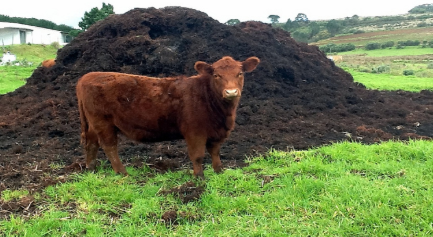
Application and characteristics of organic fertilizer production equipment
Organic fertilizer consists of fresh chicken and pig manure, without any chemical components. However, the digestibility of chickens and pigs is poor and only 25% of nutrients are consumed. The other 75% nutrients in the feed are discharged together with feces, making the finished product contain nitrogen, phosphorus, potassium, organic matter, amino acid, egg white material and other components. The production equipment of chicken manure organic fertilizer not only creates economic benefits for enterprises, but also contributes to the environmental protection project of human beings.
Composition of compound fertilizer production line
Drum screen machine, batching system, LP series chain crusher, mixer, drum screen machine, cage crusher, NPK fertilizer granulator, double roll granulator, drum sand machine, high humidity material dryer, cooler, packaging machine.
Compared with the compound fertilizer machine, the organic fertilizer production equipment has fermentation composting transfer machine and semi wet material grinding machine.
Composition of organic fertilizer production equipment
Fermentation composting steering machine
The trough turntable is a kind of fermentation and composting equipment which is widely used at present. It includes walking fermentation tank body, walking track, electric take-off device, turning and dumping part and turning tank device (also known as transfer vehicle, mainly used for multi tank use). The turning parts are driven by advanced rollers, which can be lifted or not lifted. Lifting type, turning depth should not exceed 1.3m. The bearing seat of the turning device is fixed on the turning frame, and the two main shafts are fixed on the bearing pedestal. Each spindle is welded. A plurality of turning shafts are arranged at a certain distance and staggered at a certain angle. Each turning pile stack plate is welded on the shaft. The stacking device is connected to the walking device by pins.
Compost Products From Cow Manure
In the majority of rural areas, cow dung or simply just cattle manure can be used widely in gardens. However, in comparison to others, cow manure isn’t actually loaded with nitrogen, nevertheless it comes with an extremely higher level of ammonia which can damage plants and burn them. Plants could be burned when cow manure is used directly to them. Our article goes into more details on how to make fertilizer from cow manure.
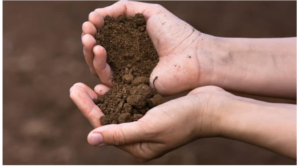
A effective and safe approach to use cow manure on plants is to compost it and you’ll essentially reap benefits in that way. Cow manure is literally comprised of nutrients and organic materials. However, they generally do contain just around 3% nitrogen, 2% phosphorous and of course the famous 1% potassium. So that as we’ve said before, it can actually contain quite a top level of ammonia as well as a group of dangerous pathogens.
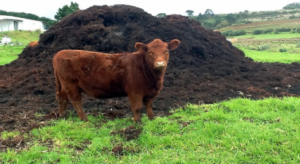
Because of the above reasons, cow manure ought to be composted or aged to ensure that it can be safe for usage as being a fertilizer. When properly composted, you’ll have the ability to make use of cow manure without worrying about weed seeds, pathogens and ammonia. And you’ll be able to easily add the compost to your soil and reap the organic benefits that come with it. However, due to the moisture holding capabilities, you’ll also be able to water your plants significantly less.
Once you water your plants less, the fresh roots can readily use nutrients and water every time they should need them. And you’ll additionally be enhancing the aeration to your plants since heavily compacted soil will probably be easily separated. Composted manure also includes the beneficial bacteria that is required for converting your nutrients into an readily available form for the plants plus they prevent burning.
In relation to the composting process, you’ll have to firstly select a location that may be suitable for developing a pile that may be roughly a 4-foot square. It’s also good to bear in mind that you’ll also have to turn the pile so ensure you have sufficient room. Next you’ll need to spread about 3 inches of dry organic material layer onto the square area. Then you’ll spread roughly 2 inches of cow manure.
You’re gonna should continue layering until your pile is around 4 feet in height. Then you’ll must water your pile to make sure that it is actually completely damp even at the bottom. After you’ve dampened your pile, you’ll should give a layer of soil. About every three days or so, you’re likely to have to turn your compost pile as a way to allow the flow of air involved with it.
You’ll also need to ensure that your pile stays moist. And you’ll have to periodically examine the temperature when you turn it to help keep the temperature at its optimum level. After the composting process is completed, you’ll see that it must be dark brown, having an earth smell in fact it is quite crumbly.
While we conclude we have now just considered the best way to compost cow manure to make it into fertilizer. So we have likewise discussed the numerous benefits associated with cow manure fertilizer. So, understand that you can’t apply fresh cow manure until you’ve composted it!
How to make cow dung powder products
Everywhere you can find cows, you can be certain of just one thing, there will also always cow manure. As beef and dairy farming intensified, industrialized and specialized, the need to find urgent solutions for cow dung environmental pollution problems became real. Because of this, many machines were inverted to turn cow dung into powder fertilizer.

Let’s take into account the fact than an average beef cattle unit produces around 10.5 a great deal of manure annually, plus an average dairy cow unit produces over 15.4 a great deal of manure annually. To get things into perspective, a city with 410,000 residents produces less waste when compared to a single dairy farm comprising 2,500 animals. Cow dung pollution is a huge global problem. In certain countries, pollution from cattle manure exceeds industrial pollution. Many individuals wrongly feel that animal waste is “natural” so it’s not dangerous, but that is certainly far from the truth.

Fortunately, cow dung can be changed into a great organic fertilizer powder. It includes each of the nutrients plants need to thrive and it’s rich in organic matter. The NPK profile of cow dung is 1% potassium, 4% nitrogen, and two% phosphorous. Other constitutes of cow dung besides micronutrients and organic matter are various enzymes and microorganisms. To be able to convert cow dung into fertilizer, specialized machines are often needed. The fertilizer produced can vastly improve soil structure and fertility. What’s more, the fertilizer can promote healthy microbial growth which will help prevent common root diseases and rot.
Cow manure is a good organic fertilizer, however if you put fresh cow dung onto the soil, the vast amounts of ammonia produced could cause a horrible odor and burn crops. Furthermore, unprocessed cow dung may be loaded with salt, based on the diet the cattle were fed, which happens to be not perfect for crop growth. To produce a nutritious fertilizer, cow dung needs to be composed. Natural fermentation of cow dung can take a long time, but fortunately, now there is a variety of modern composting machinery in the market designed to accelerate the procedure.
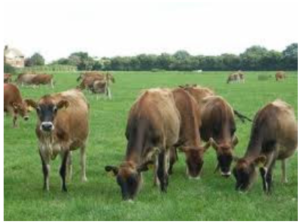
Cow dung must be fully fermented before it is used on agricultural soil. Otherwise, it is going to cause soil temperatures to increase, that may damage crop root systems. Furthermore, fresh cow dung is full of parasitic organisms and pathogens, which may be damaging towards the surrounding environment and water supplies.
To turn cow manure into a safe organic NPK powder fertilizer, it should be fully decomposed. The easiest method to compost cattle waste is to buy the best cow dung fertilizer machines, like self-propelled compost turners, hydraulic windrow turners, and dewatering machines.
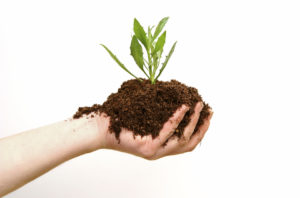
High-grade NPK compound fertilizer is in high demand which is relatively cheap to create. By producing powder fertilizer from cow dung, you can help to handle the mounting global environmental pollution problems associated with mounting animal waste. What’s more, with all the right equipment, powder fertilizer might be processed further into granules or pellets. Granules are simpler to store and transport. Look into the latest granulation machines to perform your cow dung fertilizer production line.
Organic Fertilizer from Manure Disposal
With regards to increasing your overall manure management, there has been a series of new and improved technologies which are now being employed throughout the industry. In simple terms, these specialised tech solutions are now serving in order to even successfully reduce the pollution that is certainly created in water ways due to misused manure. However, to be able to properly implement these techniques, a series of management issues needs to be firstly applied. Our article enters into some important points for managing and selling manure.
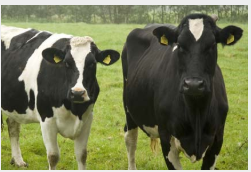
Only if manure is effectively managed then the benefits of its use can be captured. This simply just implies that it is going to finally be easier to include it with farming systems while making sure the water pollution remains reduced or rather controlled. When biological decomposition occurs, some by-items are produced and as a result of techniques that manure is treated or perhaps stored, the by-products may also be controlled. This allows the farmer to produce a highly marketable product, in addition to manage the nutrients in the manure along with any odors.

Since microorganisms make the potentially profitable waste elements, it really is necessary to provide you with the perfect environment to allow them to thrive. So, if you carefully handle, treat or store your manure inside a desired environment, this encourages the microorganisms to make by-products which are good for you. Additionally, farmers may use biological manipulation to generate the perfect by-product based on their market.
If manure is mixed with a material that may be abundant in carbon as well as enough air, the manure may be easily converted into compost within a case where all the air has become eliminated and heat is added, you’ll have the ability to create biogas, in addition to a stable effluent. However, biologically manipulating your manure is a reasonably challenge with regards to the environment and frequently the type of animal plus the feed that they are fed along with a management system all play a huge role within the microbial activities that occur. Additionally, these activities are greatly affected by the solids content.
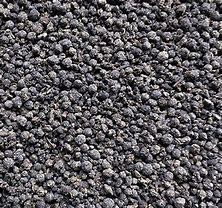
People that have a higher solids content are fantastic for undergoing aerobic activity. And if you’re employed to adding bedding along with water and even waste feed, this will likely also affect the microbial activity. Based on the pH values associated, this may also affect those who be involved in creating methane. And as we’ve said before, the meals intake also plays a crucial role in management since higher protein diets build a pretty intense odor.
When it comes to selling, probably the most recommended techniques for selling is usually to simply fill sizable bags and then sell to farmers. You’ll simply must collect the poop when it is fresh and add them to a trusty container for your manure to form. And so they even produce a pretty decent profit dependant upon the animal the manure has come from. However, in order to use the markets by storm, you’ll also have to put a little effort into how you will advertise your product don’t forget to get creative.
Since we conclude we have now just discussed many ways for managing your manure. And that we have likewise given some guidelines on how to produce a profit yourself. Remember, you ought to never apply fresh manure to fruits or vegetables that are eaten raw given that you can generate an E. coli outbreak!

